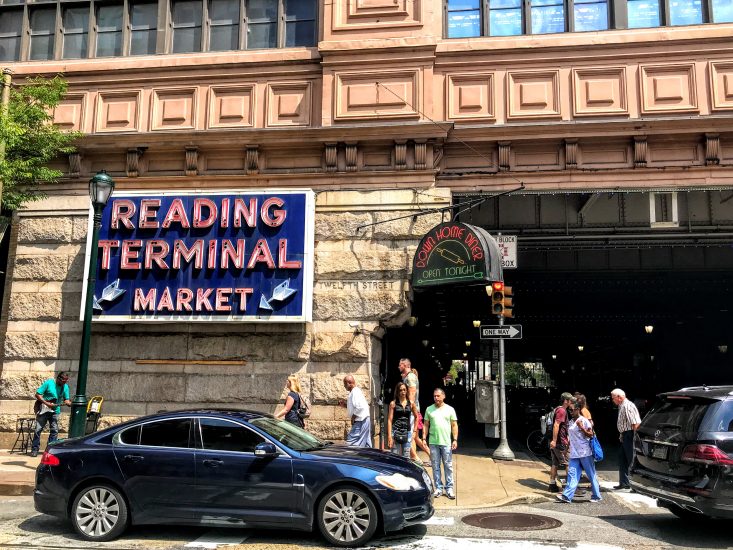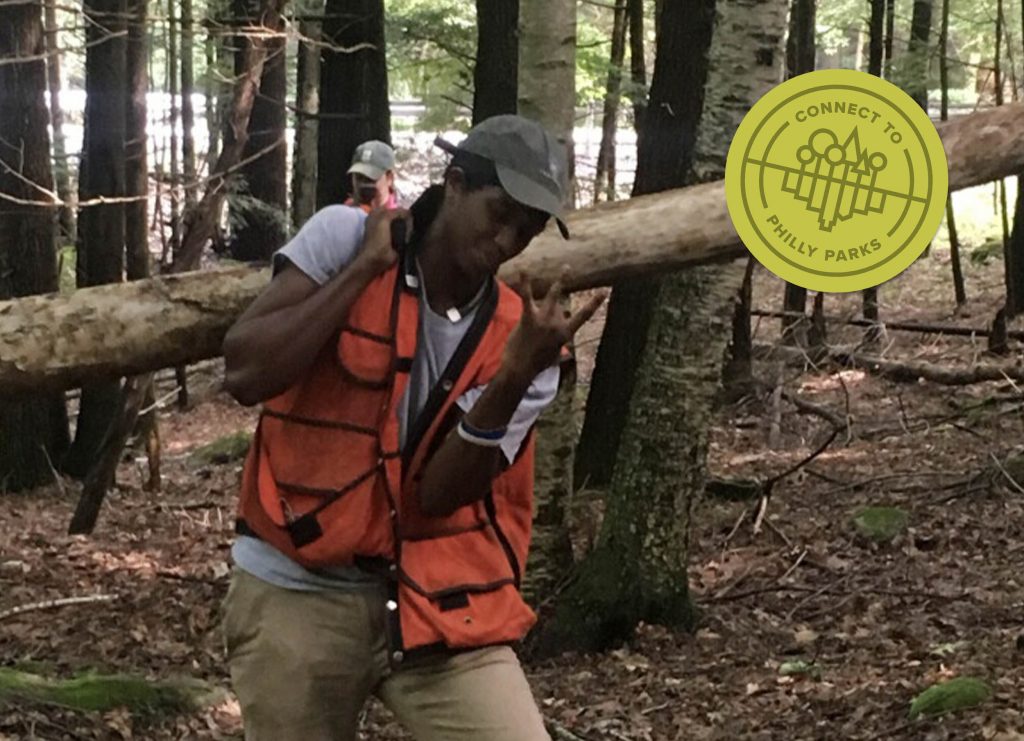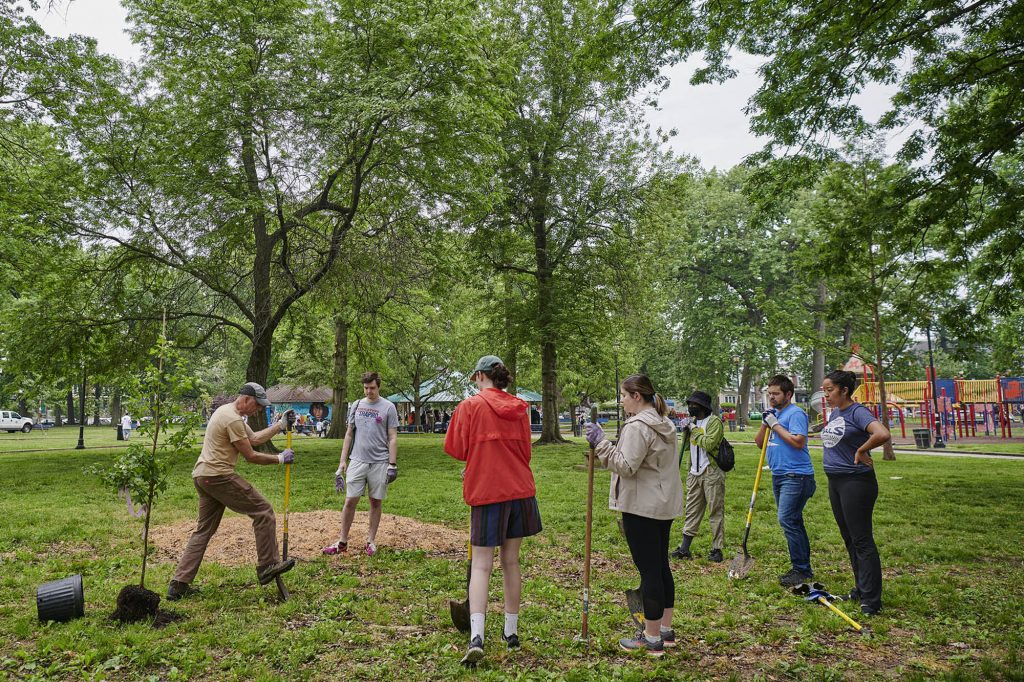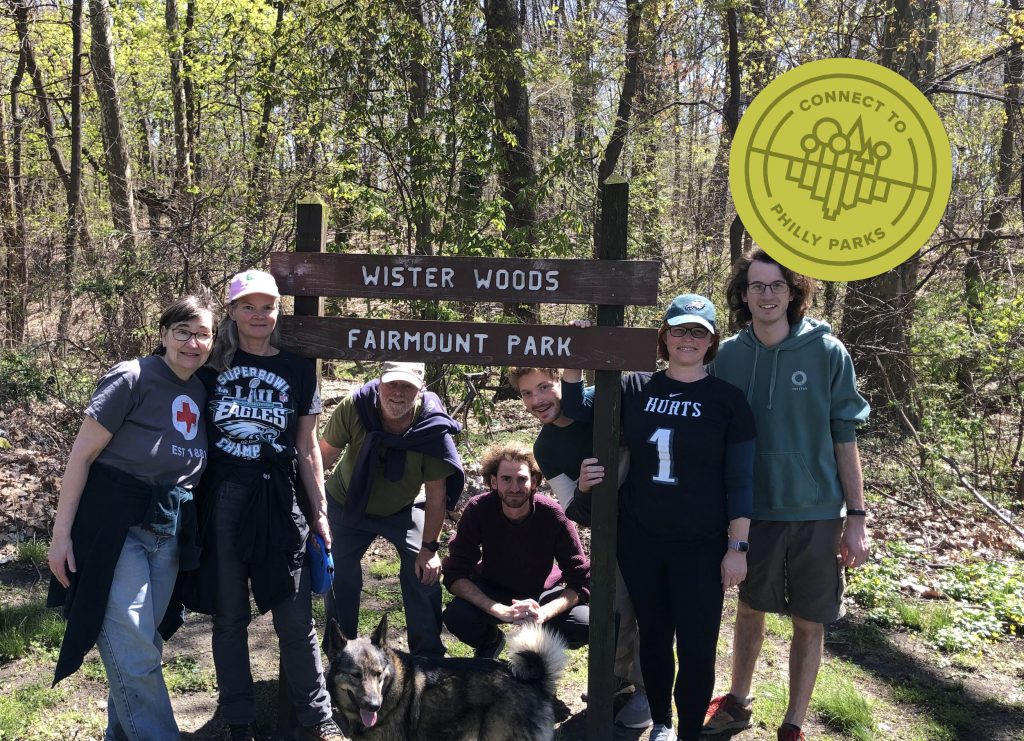Fairmount Park Conservancy convenes over 20 non-profit partners in Philadelphia for cross-learning and collaboration opportunities as an outgrowth of our work on Reimagining the Civic Commons.
Anuj Gupta still remembers the first time he discovered the spice shop at Reading Terminal Market. Tucked away on one of the outer aisles next to a staircase, Gupta was amazed to stumble upon The Head Nut and its shelves upon shelves stacked with an impressive selection of spices.
“Where did this spice shop come from?” he thought to himself.
The new general manager of Reading Terminal soon found out that the spice shop was a longtime vendor at the market for some 10 years.
Chances are the hundreds of people who visit Reading Terminal Market every day have found themselves in similar situations as Gupta–tourist or regular customer alike. The market’s layout is a simple square, but at 78,000 square feet, it easily feels like an endless maze of scents, sights, and sounds.
“It’s a sensory overload,” says Gupta, while noting that at the same time, it’s part of the market’s charm. “But I realized how little of the market’s story that we tell.”
In fact, a recent customer behavior study found that most regular visitors spend 16 minutes on average at the market, and more or less visit the same vendors each time. They also follow their own set path through the market each time, in an attempt to avoid crowds.
Gupta’s experience and the customers’ feedback is what led the market to embark on a Wayfinding and Interpretive Signage Project two years ago. At a recent learning session with the Reimagining the Civic Commons Learning Network, a program of the Knight and William Penn Foundations and convened by Fairmount Park Conservancy, Gupta shared lessons learned from the wayfinding project.
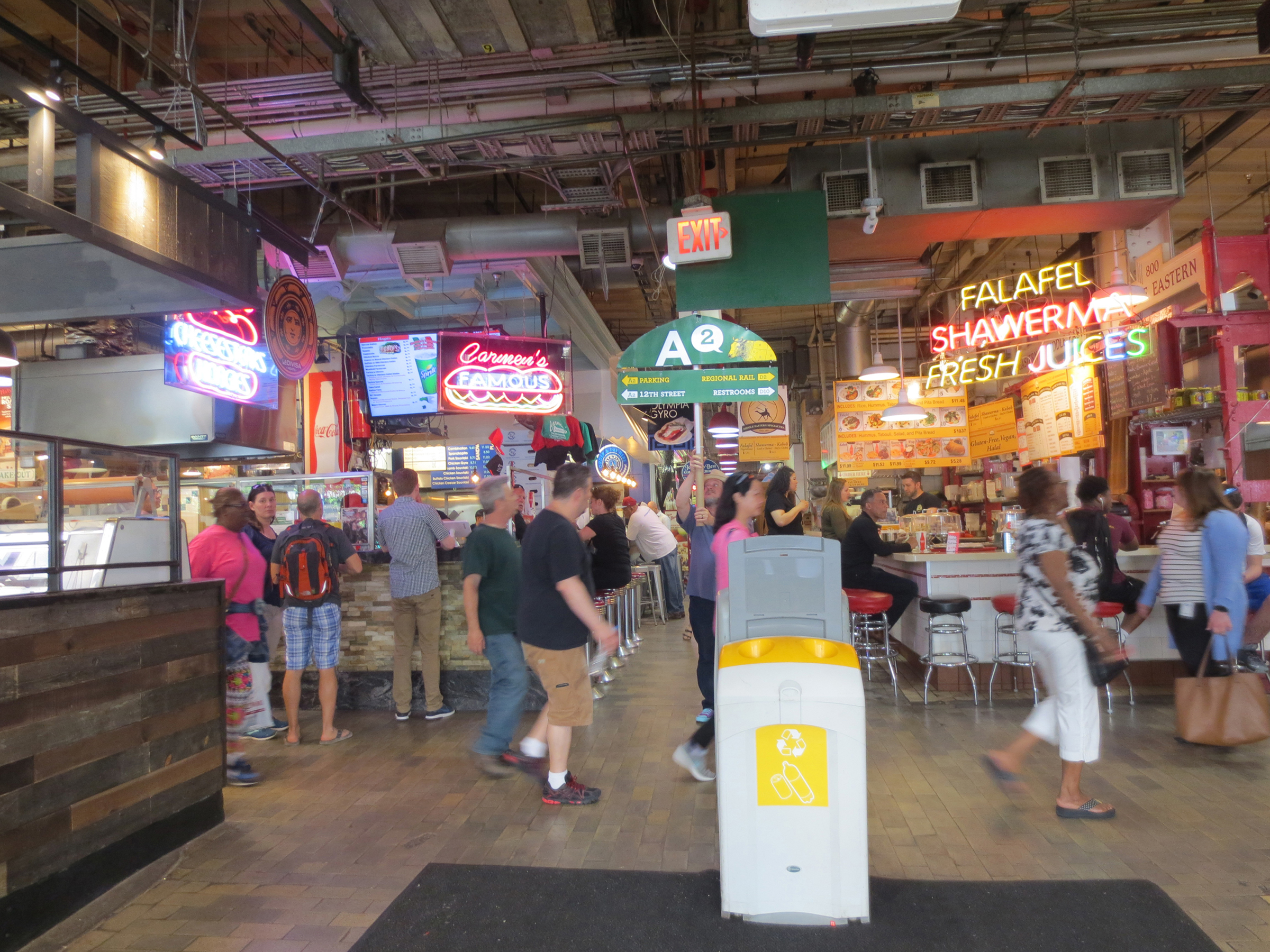
Aaron Goldblatt of Metcalfe Design holds a test wayfinding sign at one of the entrances of Reading Terminal Market. Courtesy of Metcalfe Design.
First, the market sought the help of the Lenfest Center for Cultural Partnerships at Drexel University, which hosted a class called Interpretive Planning at an Historic Site in 2016. The course, taught by Page Talbott and Melissa Clemmer, tasked 10 graduate students with developing an Interpretive Planning Report for Reading Terminal Market.
The collaborative effort identified three major themes for the market: Continuum and transformation: Our history is your history; Authenticity; and Diversity.
Design firm Metcalfe then took the students’ findings a step further, embarking on an interpretive process that included documenting an oral history of the market. The designers engaged with vendors, regulars, and visitors alike, prompting them to tell their stories and memories of selling, shopping, and eating at the market.
It was an important first step in any project’s process, says Metcalfe’s Aaron Goldblatt, who after hearing so many stories determined that the “wayfinding aspect has to be subservient to the interpretive part–the one that answers, ‘What is your story?’”
With that in mind, the Metcalfe team worked with the market to design wayfinding and interpretive signage that was simple, yet eye-catching enough to stand out from the visual clutter, coupled with a hint of humor. After all, said Goldblatt, “It’s a place of shopping, but it’s also a place of pleasure.”
The interpretive signage is also meant to tell more of the market’s stories–old and new. The team made sure to incorporate faces of the vendors and longtime customers and allow their stories to tell the history of the market.
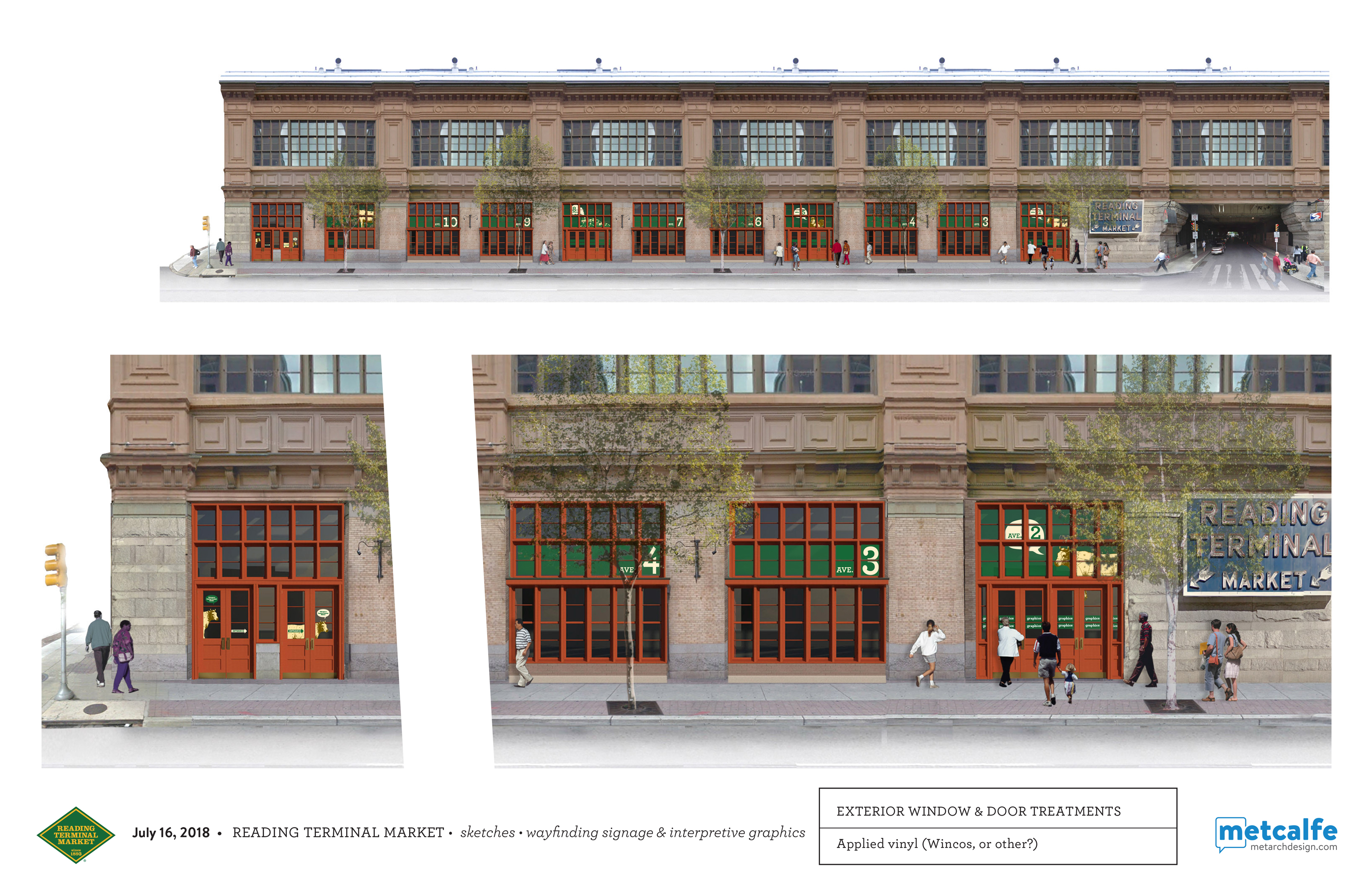
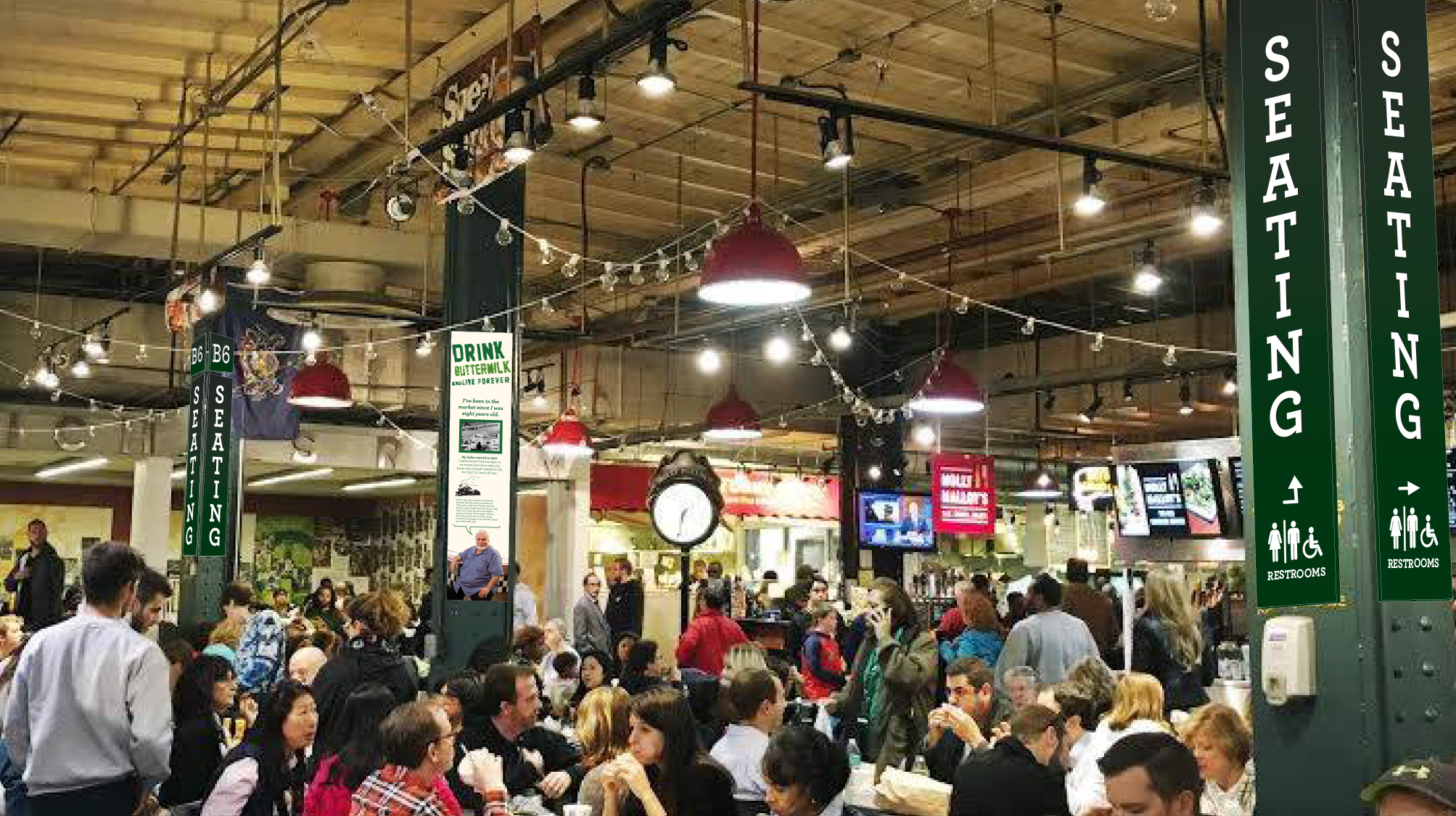
The wayfinding project proposes installing interpretative signage at seating areas in the market to encourage “dwell moments” among visitors.
But where to place all of the signs?
There are the obvious spots at every entrance for wayfinding signs that will direct visitors to the nearest restrooms or parking. But for the interpretive signs, the team proposes placing them in seating areas–on the columns, along the walls–scattered throughout the market. This will allow customers to dwell and soak in the stories and history of the market as they enjoy a meal or snack.
With the proposal now in play, now comes the hard part, says Gupta. Once the market receives final cost estimates, fundraising will begin so that the signage can be printed and installed.
The hope that is that new signage will not only encourage visitors to dwell in the market a little longer, but that they’ll learn something new, too, all while honoring its authenticity. After all, says Goldblatt, “The beauty of this place is its chaos.”
Lessons Learned:
- Use wayfinding to help tell your history and story. For such bustling place as Reading Terminal Market, it’s been easy for the market’s history to get lost in all of the chaos. Incorporating interpretative signage into one’s wayfinding project can help with that. It’s also provides a good opportunity to engage with the community and incorporate their stories and voices to tell the history of a place.
- Have fun and catch people’s eye. In a place like Reading Terminal Market, where every vendor has its own iconic sign, wayfinding signage needs to be both simple and eye-catching to stand out from the rest. This is where having some fun with the design can help, though always keeping a place’s identity in mind.
- Create a tool(s) that speaks to all people. Reading Terminal Market welcomes thousands of visitors from all over on a daily basis. While signage should have some creative elements, on fundamental and functional level, everyone should be able to interpret a wayfinding sign, whether it’s the universal symbol for restrooms or parking. Keeping the signage consistence and recognizable, using repeating elements, can help make users feel more comfortable and have greater control as they navigate the experience.
